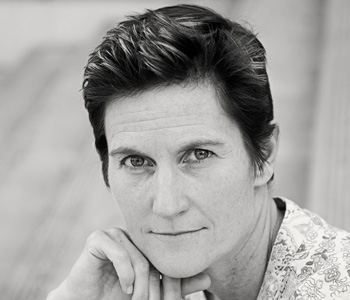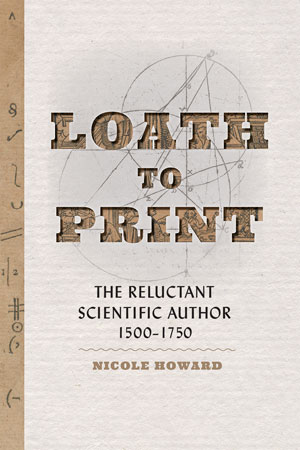
At its heart this book is about scientific discovery and the risks inherent in sharing new ideas. It focuses on the scientific revolution in Europe during the 16th and 17th centuries. This was a period when astronomy, medicine, and natural philosophy were undergoing massive shifts. What people knew and how they came to know it—their theories and epistemologies—were changing quickly. This story is also situated in the early years of the printing press, a technology that radically transformed how ideas were communicated. Exponentially more copies of a work could be efficiently produced by the press, and readers had greater access to printed works than ever before. Much has been written about the sciences in this period, the technology of the press, and the relationship between the two.
My book takes a slightly different tack. I examine the various attitudes among scientists toward print technology, and I challenge the idea that printing was universally welcomed. While the importance of the press to the advancement of science cannot be denied, the scientists positing new ideas expressed serious concerns about putting their work into print. The title of the book, Loath to Print, echoes the attitude of many scientists of the time. Astronomers, physicians, philosophers, and others were happy to share their ideas within a narrowly defined community of scholars, individuals who shared common values and approaches to knowledge production. They were less keen, however, to see those ideas broadcast to a wider public that they believed lacked the necessary skills to evaluate their claims properly.
In the book, I unpack why scholars were reluctant to put their work into print. Their reasons were varied, and it is interesting to see the array of the concerns or frustrations authors had with the process of printing and publishing. I also examine the ways they dealt with this reluctance. Some shunned print entirely; others attempted to control the printing process in different ways. I am hoping to provide a glimpse of the attitudes held by a community of scholars toward a broader public that would, invariably, be readers and judges of their work. I also want to shine a light on some of the very creative methods they employed to see that their ideas landed in the “right hands”—the readers they believed were best suited to assess their work.
Loath to Print considers a brief moment in the much longer history of knowledge production and dissemination; specifically, the book addresses ideas of scientific elitism. With the advent of print, the public gained access to ideas and theories that, traditionally, would only have been accessible to a select few scholars. Now ideas like Isaac Newton’s theory of universal gravitation, or William Gilbert’s work on the magnet, or Christiaan Huygens’ treatise positing life on other planets were no longer circulated among a select few, but became available to the public from book sellers. Certainly, the Church had a long history of attempting to limit the circulation of particular kinds of knowledge. Now the worry among many scientists was that uneducated readers would misunderstand a work, or misapprehend a theory, and then trumpet their counterarguments with no regard for their accuracy. Such a response could—and often did—make life difficult for the author. Instead of engaging in meaningful debate with a peer who viewed the physics differently, or who arrived at a different medical conclusion, they would be bogged down in defending themselves against specious and uninformed arguments. The debate, then, was not just on the merits of a scientific idea, but on the efficacy of publishing at all.
My own scholarly work effectively laid the breadcrumbs for this project, though I did not set out with this argument in mind. Originally, I was interested in the ways that scientists tried to control the audience for their work. Sometimes they requested that a limited number of copies of a work be printed. This allowed them to share copies with specific readers whom they felt made up the ideal audience. In other research I looked at scientists who were involved in developing their own small-batch printing techniques, and I wondered why they were going to all the trouble. Finally, I examined the work of editors in this period of science. These were individuals who took on the responsibility of seeing another person’s work into print, often agreeing to manage the entire printing and publishing process themselves. I was curious why and how the role of the editor – not the copyeditor but more of a midwife to publication – emerged in this period.
Ultimately, I came to see that all of these efforts—private circulation, in-house printing, etc.—pointed to a deep and abiding resistance of scholars to seeing their works into print. They really disliked doing it! And they especially disliked the fallout from publishing, given that their time could be completely taken up trying to respond to dozens of accusations and claims by readers who simply did not get the science. That realization led me to look more closely at communication among scientists, to better understand how they felt about print. It did not take long to see some consensus: printing was an arduous task, often best avoided.
On page 61 of the book, I quote the great astronomer Johannes Kepler, who offers “Advice for Idiots” who might attempt to read his book. His tone is sharp and his intention clear:
But whoever is too stupid to understand astronomical science, or too weak to believe Copernicus without affecting his faith, I would advise him that, having dismissed astronomical studies and having damned whatever philosophical opinions he pleases, he mind his own business and betake himself home to scratch in his own dirt patch, abandoning this wandering about the world.
Comments like this were made by numerous scholars across scientific fields, and I offer several examples in addition to Kepler’s opinions. The candidness of many authors is astonishing, going beyond mere rhetoric to display a fierce disdain for the lazy or unlearned reader. These sentiments are important not just because they reveal prevailing attitudes of the early modern period, but also because they sound familiar to us today. We live in a time when the gap between the scientific community and the lay public has widened to a remarkable—and at times problematic—extent. The book may not offer solutions to this problem, but like a good history it serves to remind us that our concerns about publishing are not altogether new. The book provides important context for understanding the gap between scientists and the public and reminds us of the responsibilities that lie with both the producers and consumers of scientific knowledge.
I hope that the book stimulates thinking about two distinct but related issues concerning the publication of scientific work. One is the technological aspect of knowledge sharing. It is vital to consider the ways that technologies—in this case the printing press—affect what we know and how we know it. The printing press has long been considered a momentous innovation, celebrated in most quarters (except, perhaps, the 16th century Vatican), and rightly so. But it was also greeted by many with skepticism. Within the community of scientists, philosophers, and physicians, we see nuanced arguments being articulated against publishing one’s work. To be in print was not necessarily desirable. The technology of the press, however helpful in some regards, created the possibility of new audiences, new interpretations, and new conflicts.
The second level about which I hope readers think is the sociological. The book offers case studies of the culture of scientific communication and explores values and attitudes within the community of scientists. My hope is that readers get a glimpse of how scientists were thinking about their own work in this period, and the ways they imagined that work being received. There is, of course, a subjective component to knowledge production, and it is fascinating to see how astronomers or chemists or physicians worked to influence the reception of new ideas. Certainly, the printing press removed a significant amount of control, in terms of audience selection. But scientists responded with creative new ways to direct their work into the hands of readers they sought, and keep it away from those readers they felt incapable (or unwilling) to read it properly.
The book, then, tells us as much about the intellectual and epistemological goals of authors as it does about the perils of printing. It reveals an aspect of scientific work that has not gotten much attention, while also reminding us that there is a long backstory to the current tensions between science and the public.


Nicole Howard, a professor of history at Eastern Oregon University, received her Ph.D. in the History and Philosophy of Science from Indiana University. Her work examines the relationship between print culture and Renaissance science. Dr. Howard’s first book was The Book: The Life Story of a Technology, a brief history of books in western culture. A sabbatical five years ago gave her time to develop her ideas around scientific communication in the 16th and 17th centuries, and that research gave rise to her most recent book, Loath to Print.